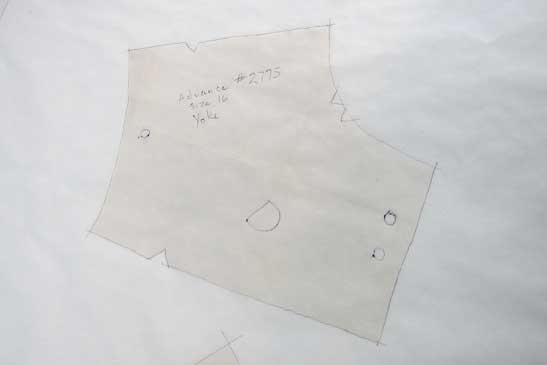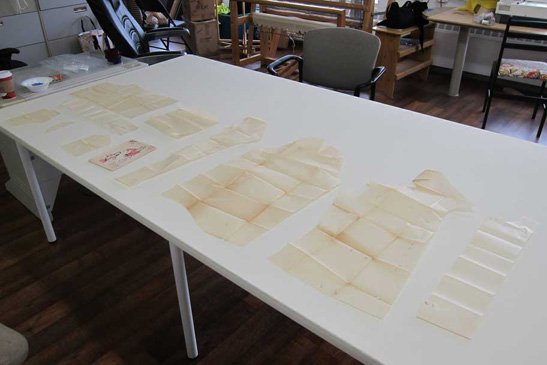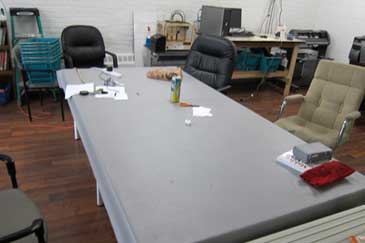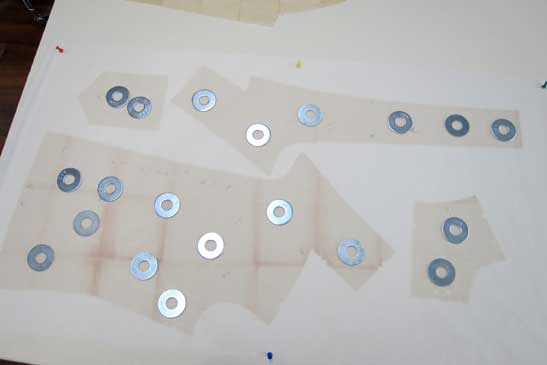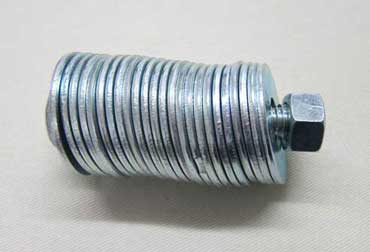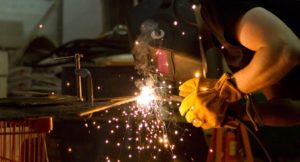The craft and textiles area at PS:One is visually dominated by an eight foot by four foot table. The table is a handy work surface for projects of all kinds, but the main reason it is so large is so you can lay out long, full widths of fabric for sewing.
It usually looks something like this, covered up by a protective heavy grey vinyl tablecloth:
Underneath is a clean, firm, pin-able and iron-tolerant surface perfect for working with flat patterns, even for long dresses with full skirts, and laying out quilts.
Tables like these are used in theatrical costume shops, custom bridal gown workshops and custom drapery shops. It was easy to build, I just made a basic table with bolt-on legs and a sheet of plywood, stacked a sheet of Homasote on top and wrapped the whole thing in stapled cloth.
Not only is a cloth-covered table like this perfect for straightening the grain of the cloth before cutting, it is perfect for drafting sewing patterns and grading because you can pin the paper down so it won’t move. And it is a phenomenal tool for tracing existing patterns.
Here, I have a vintage blouse pattern from the 1940’s. The paper is so old and fragile it is starting to tear. Rather than potentially ruining the antique original by using it, I traced a copy of it before going any further.
To do this, I laid the pattern out on the table and ironed it very lightly with a cool, dry iron to flatten it. Next, I laid large pieces of tracing paper over it which I pinned down to the table at the corners. I also put pattern weights over the pattern to help keep it flat and ensure it wouldn’t move. Then I just traced it out. It beats the heck out of trying to do it on the floor, or on a too-small table!
Yes, I use big washers for pattern weights. Originally I was going to cover them with cloth so they’d be more grippy, but I love that I can store them easily this way.

